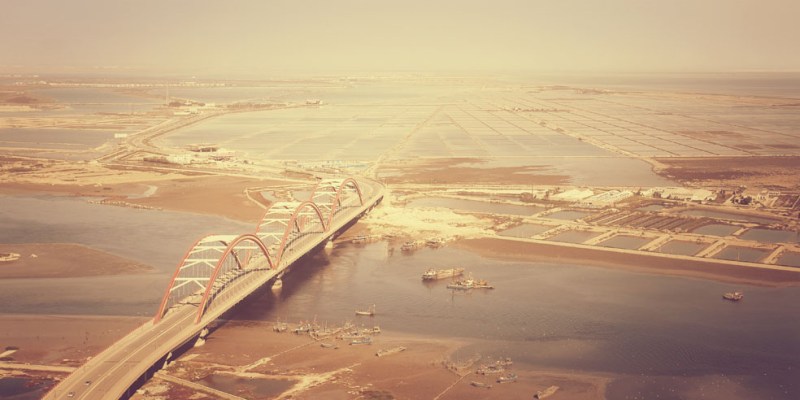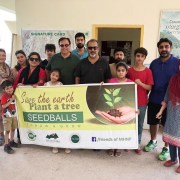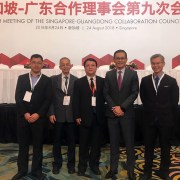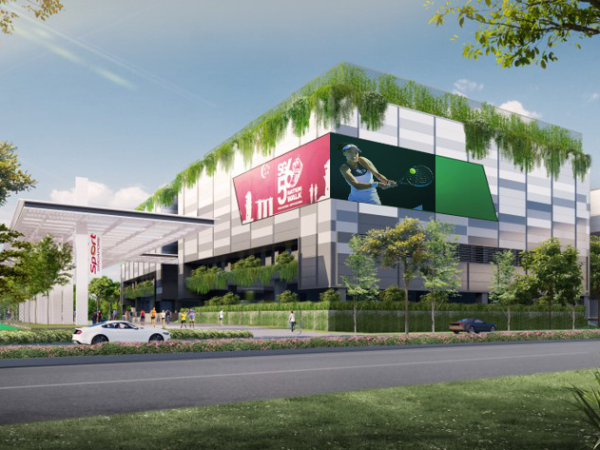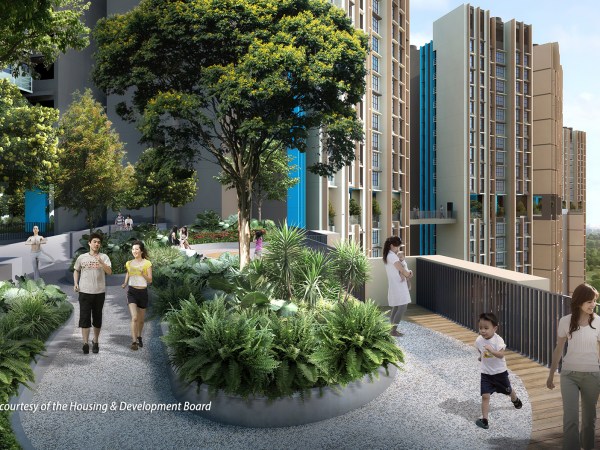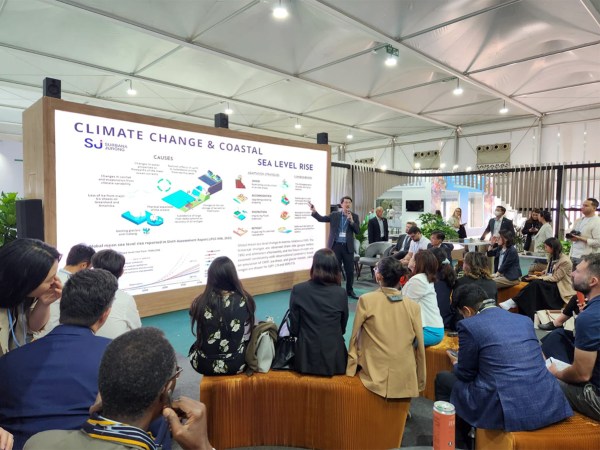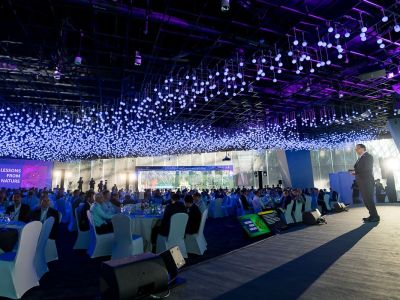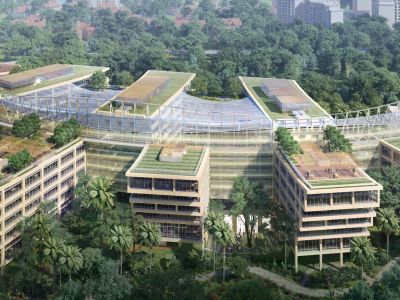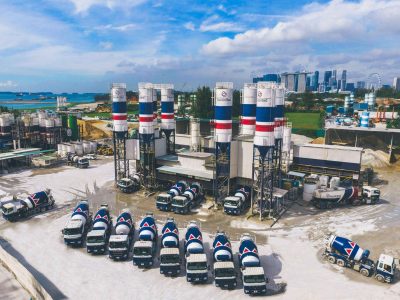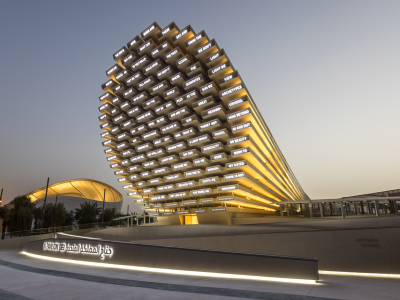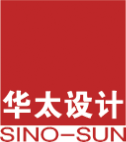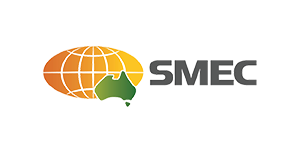What sustainability looks like in China’s Tianjin Eco-city
The desolate wasteland where the Sino-Singapore Tianjin Eco-City (TEC) once stood is well documented in the media. Ten years ago, the 30-sq-km-wide brownfield in Tianjin, a major Chinese port city southeast of Beijing, was made up of salt farms, non-arable land and a sewage pond; nothing was likely to grow there.
The air was rank with pollution too, another tell-tale sign of what lay ahead for the Surbana Jurong team that was charged with the task of returning life to the area. But what blew in along with the light spring breezes was a sense of opportunity – to turn things around and create an environment so green and inviting, the place could one day be called an eco-city.
Laying down the eco blueprint
Undaunted, Surbana Jurong’s multi-disciplinary team – made up of urban planners, engineers and architects – rolled up its sleeves and set off to work alongside other Singapore and Chinese agencies and companies on designing the Sino-Singapore Tianjin Eco-City Master Plan.
The high-profile project is meant to be a model of sustainable urban development for other cities in China and the rest of the world. This was back in 2008 when the client, Sino-Singapore Tianjin Eco-City Investment and Development (SSTEC), derived from a Singapore and China governmental partnership, had envisioned the project to be an “environmentally friendly, socially harmonious and resource efficient” eco-city. Funded and driven by the private sectors in both countries, it is one of three existing state-level bilateral cooperation projects between Singapore and China – the other two being the China-Singapore Suzhou Industrial Park and the China-Singapore (Chongqing) Demonstration Initiative on Strategic Connectivity.
Surbana Jurong had by then garnered decades of town-planning and urban renewal experience, and attained leadership as sustainability and smart city consultants, making it the ideal partner in preparing the detailed master plan required to pave the way for such a city to take shape. Success for the project would restore ecological balance to the area and lay the foundation for a thriving community.
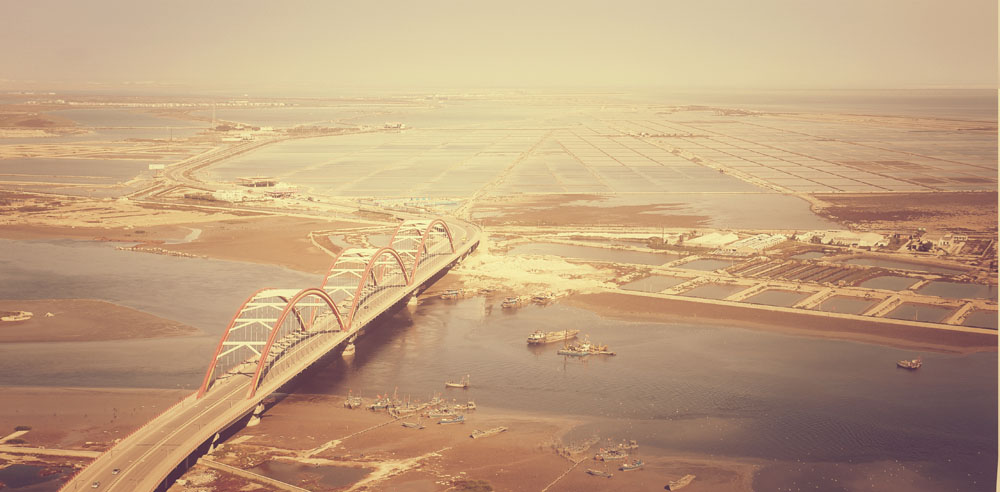
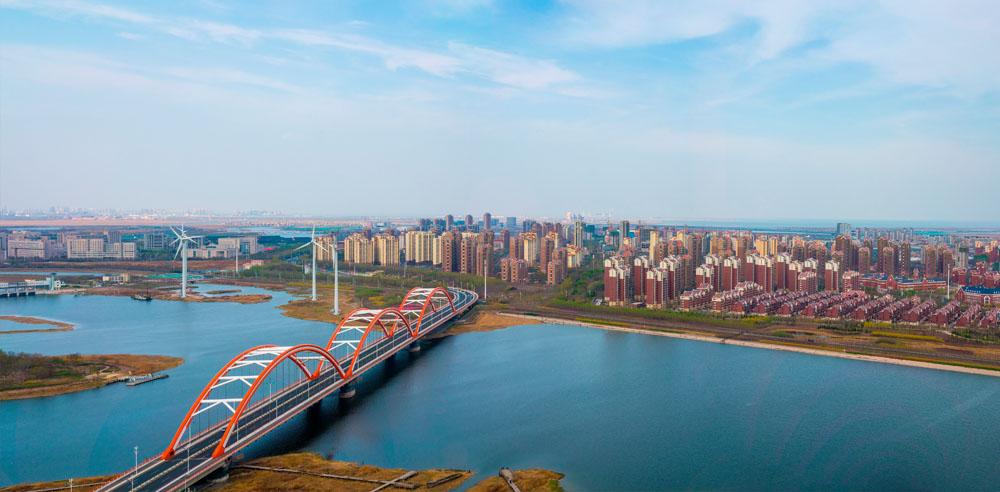
Images courtesy of Sino-Singapore Tianjin Eco-City Investment and Development Co., Ltd.
How sustainability was achieved
Surbana Jurong’s planning philosophy balanced three critical considerations – man and society; man and economy; and man and environment – to achieve integration and harmony in the city’s different areas of activity and land uses.
Within each “eco-cell” of land spanning a 400-m-sq grid, offices, shops and schools are located within walking distance of residential areas, so travel time, vehicle emissions and road congestion are reduced. Natural elements vital to sustainability were also introduced in each eco-cell, such as a 12km Eco-Valley running through the core of the city.
Bioclimatic analyses were conducted to better understand the area’s physical and climatic attributes. With these findings, the team generated recommendations of eco initiatives and features to harness the most from nature and minimise energy use, whether for heating, cooling or lighting the city.
In studying the area’s solar patterns, for instance, recommendations were made on the city’s building façades and orientations, to determine the ideal locations of solar power or solar thermal systems, and reap the most solar gains. And if solar panels were installed on all kinds of available spaces, including rooftops, parking lots and recycling bins, about 20% of the city’s energy needs could come from renewable sources.
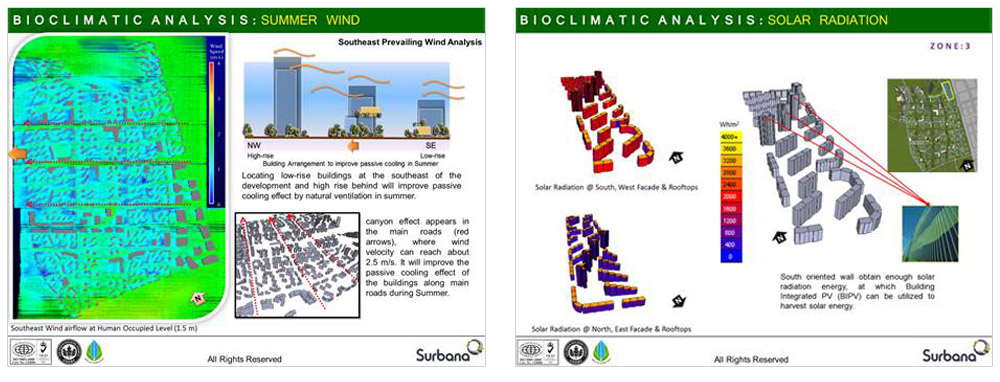
Sample slides from the team’s bioclimatic studies of the area, which led to the implementation of the wind turbines and solar panelling which can now be seen across the city.
Determining the correct orientation of buildings also meant that the inhabitants would enjoy more natural lighting and natural ventilation, even in winter, and thus consume less energy.
With Surbana Jurong’s blueprint as a guide, SSTEC kicked off the transformation of the area with a clean-up of the land and water, the use of renewable energy through wind and solar power generators, and implementation of efficient water treatment and recycling efforts.
Today, Sino-Singapore Tianjin Eco-City is a model of sustainable urban development for China, says SSTEC CEO Tay Lim Heng. He adds, “Surbana Jurong was part of a team of Singaporean and Chinese experts that formulated the master plan which transformed the area into the highly liveable, socially harmonious, environmentally friendly and resource efficient eco-city it is today.”
“The Sino-Singapore Tianjin Eco-City is a model of sustainable urban development for China and the rest of the world. Surbana Jurong was part of a team of Singaporean and Chinese experts that formulated the master plan which transformed the area into the highly liveable, socially harmonious, environmentally friendly and resource efficient eco-city it is today.”
SSTEC CEO Tay Lim Heng
Bottom line: High quality of life
As visitors cross the Rainbow Bridge, the by-now iconic symbol of TEC, it is hard to believe that the glistening city before them had an inhospitable past just 10 years ago. Today, about 100,000 people work and live in TEC, with tens of thousands more expected as more commercial establishments and public institutions start to move in. There are now nearly 7,000 registered companies and institutions, with a total registered capital of about RMB 260 billion.
Residents are happy with the communal atmosphere, fostered by common causes such as recycling programmes and shared spaces and facilities, including community centres, parks, sports facilities, medical facilities and municipal services. Free zero-emission bus services throughout TEC helped to cut down the car population, and construction has begun on the LRT line that will link TEC to much of the surrounding Tianjin Binhai New Area and Beijing when it is completed.
Clean air and water are not a given in many cities across China. Which is why when TEC celebrated the 10thanniversary of its ground-breaking in September 2018, there was widespread media coverage of its successes. The serene living environment, lush greenery, sparkling waterways, green buildings and transportation, and wind turbines and solar panels all across the city point to TEC’s strong and continued commitment to green and sustainable development, which arose from Surbana Jurong’s proposals 10 years ago.
Replication of the city’s development experience
The successful transformation of TEC into a vibrant, innovative and sustainable eco-city has not gone unnoticed.
In September 2018, Singapore and China inked a deal during a Joint Council for Bilateral Cooperation meeting in Singapore, agreeing to work together to replicate TEC’s development experience both in Chinese cities and in other Belt and Road regions.
First steps are being taken for Caofeidian in the neighbouring Hebei province to replicate TEC’s development experience, through the signing of a cooperation framework agreement which will facilitate the transfer of knowledge on green building construction.
The future is filled with promise for this young city that will undoubtedly continue to inspire others along the way.


